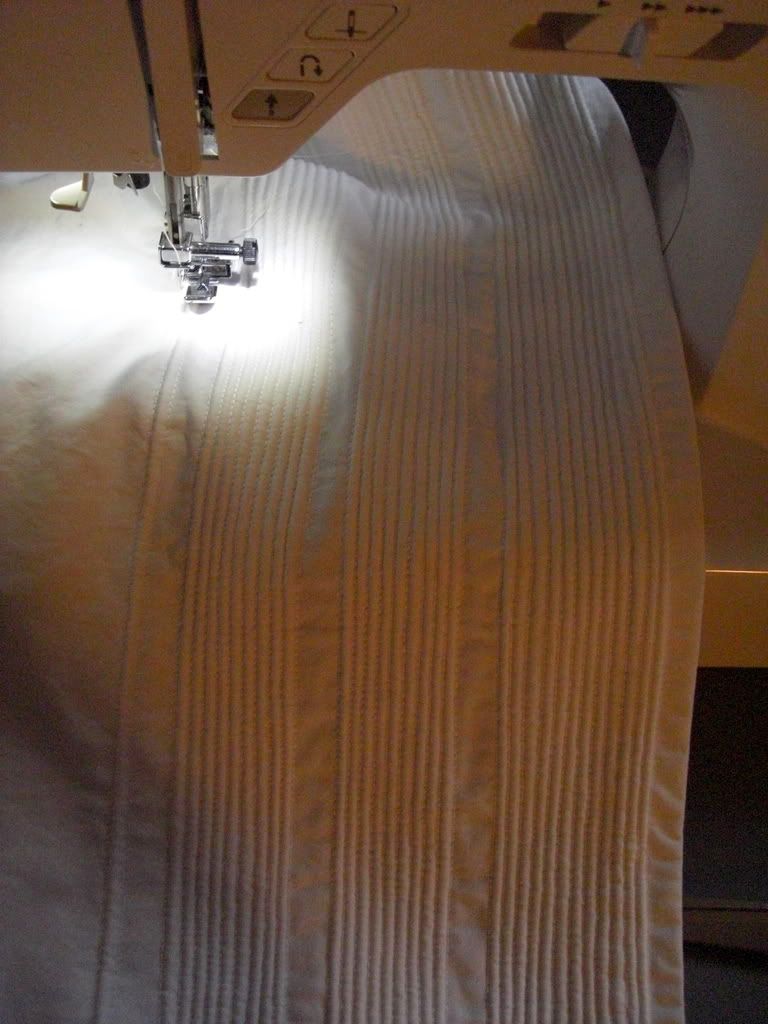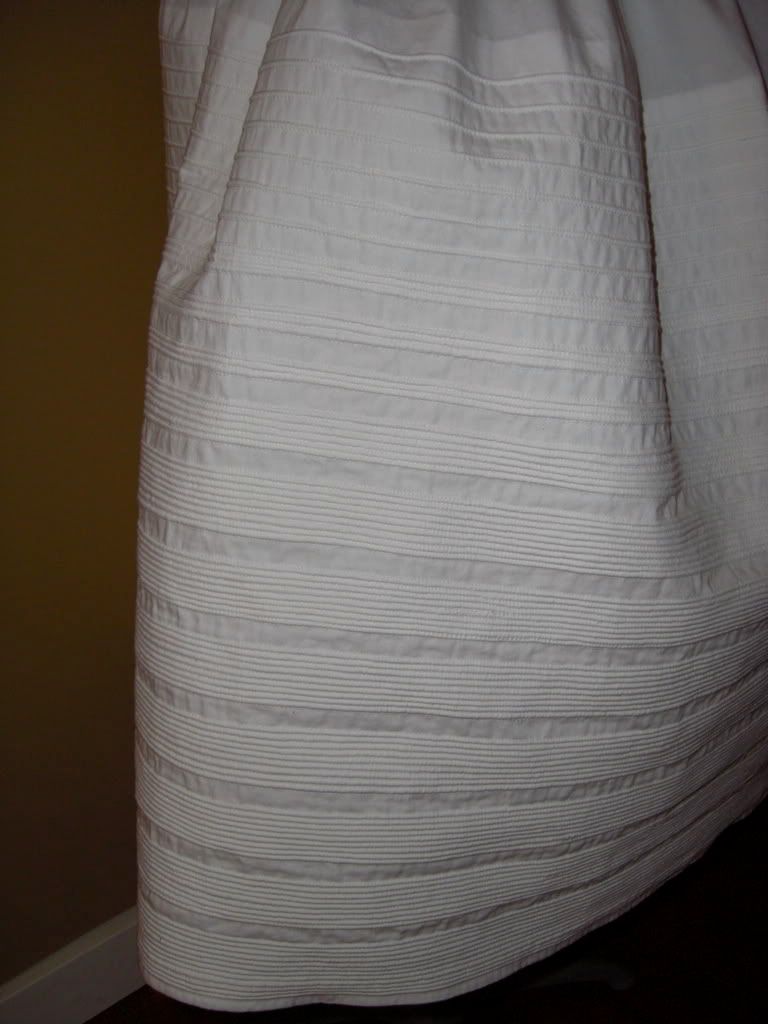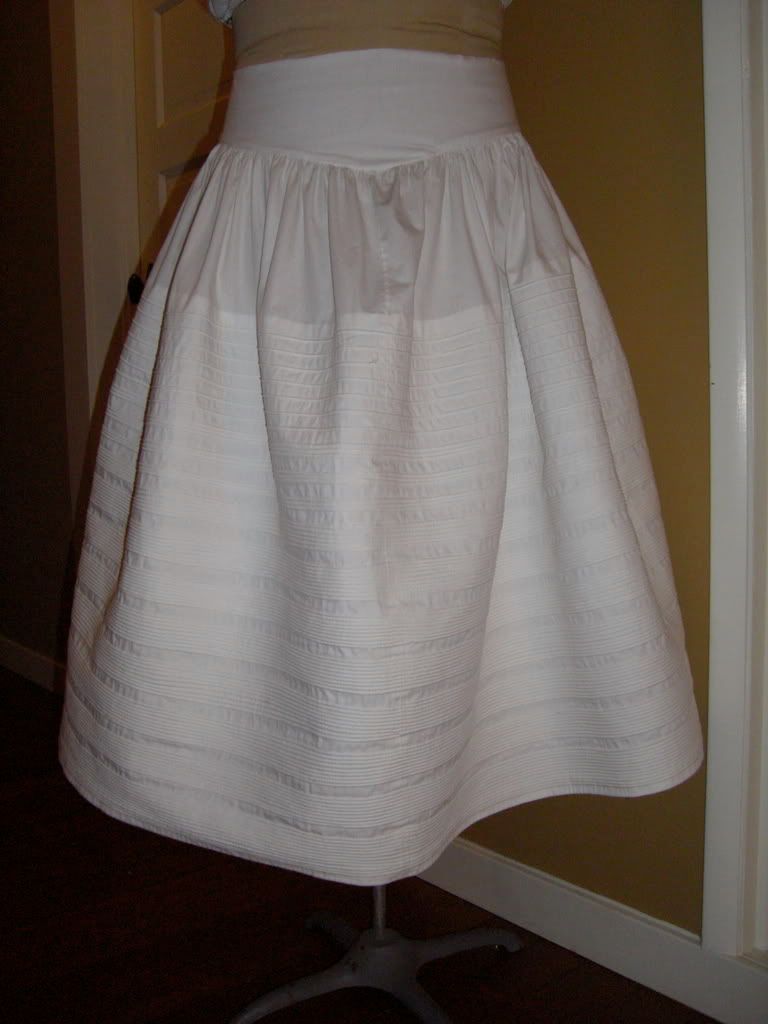In the depths of winter people either start one of two projects: a wool garment or a summer dress. The first tries to address the issue of cold of events here and now, while the other vainly tries to usher in spring just a little earlier than it can ever possibly begin. I am definitely in the later category.
Before my wedding in Summer 2008 I wanted to work on another mid-19th century dress to get into the groove of things and not mess up horribly on my Duchess silk satin. I saw the image below and fell in love with it. Sheers were all the rage on
The Sewing Academy forum, though I'm not one for jumping on the ol' bandwagon, but who doesn't love a new summer dress?!
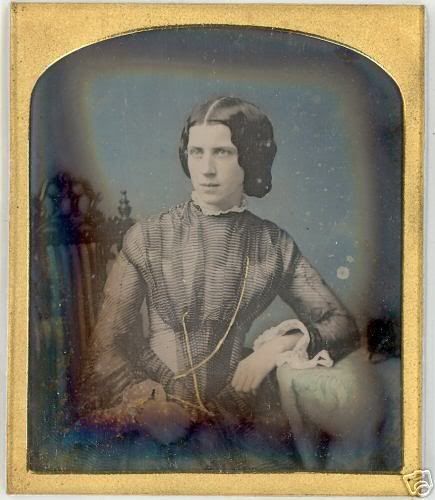 |
| English daguerreotype from eBay, note the half lining |
I used the
Truly Victorian 454 pattern but drafted my own modified-bell sleeves. The bodice is lined with white polished cotton and cotton lacing at the top edge of the half-lining around my shoulders and just covers my chemise underneath. I picked up the sheer cotton plaid at my local Jo-Anns on clearance for $1.50 a yard. In total I think the whole dress cost less than $10 to make.
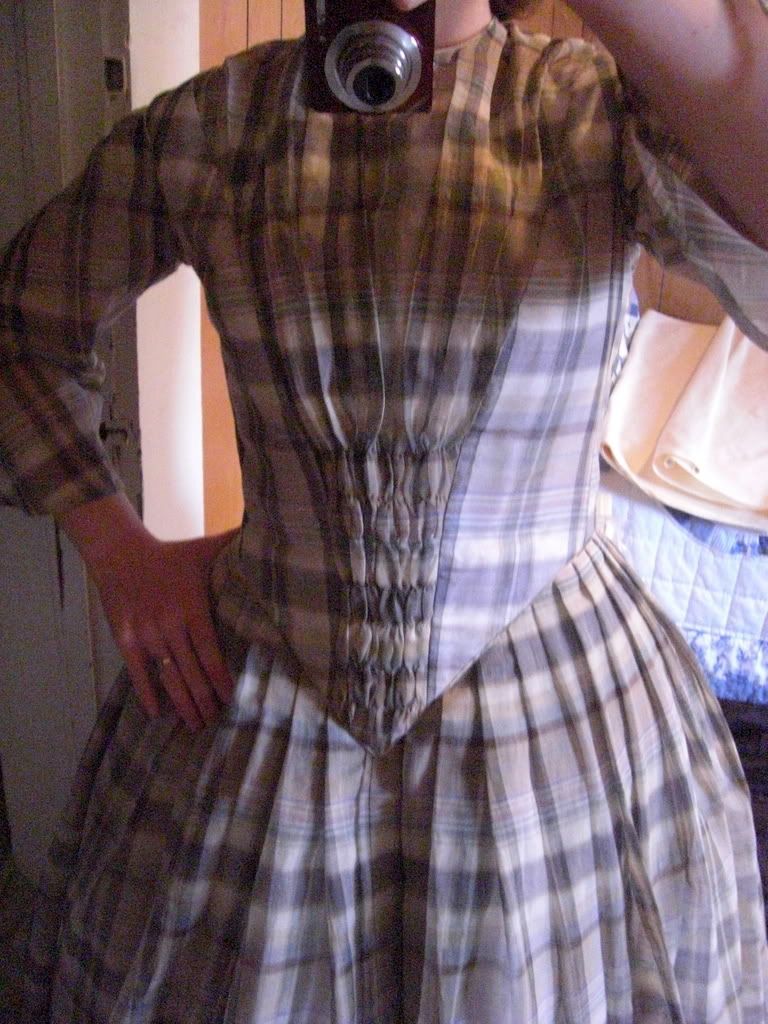 |
| Note the longer waistline than 1860s fashions |
|
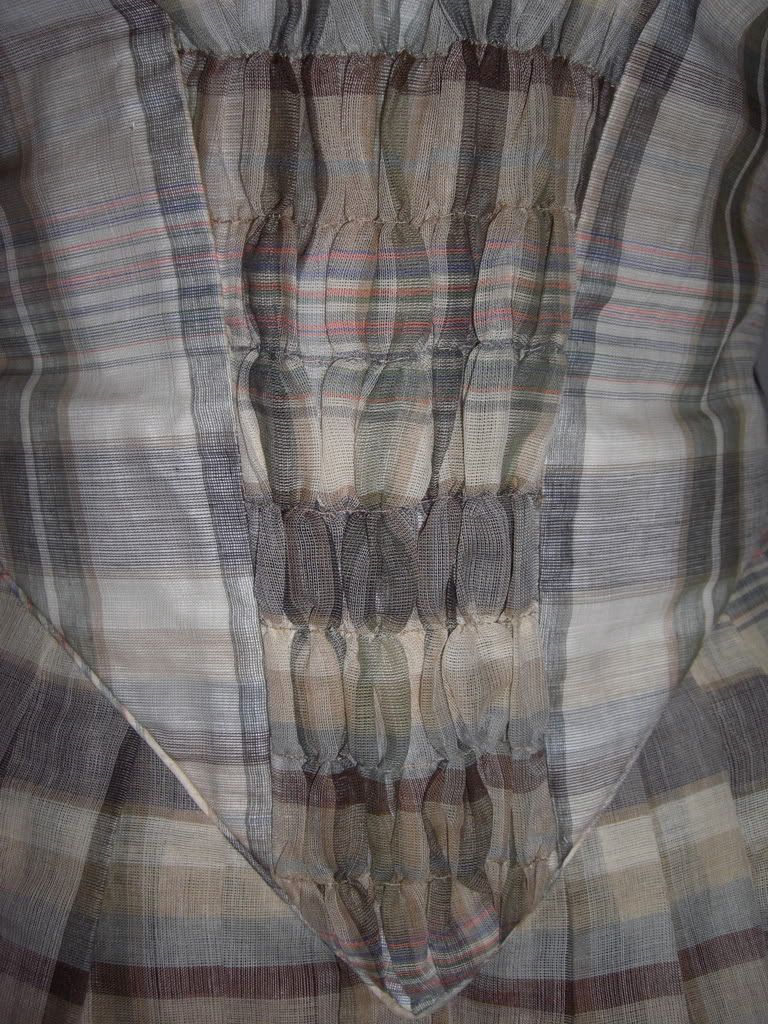 |
| Detail view of gathered fan front, the lining is boned |
|
|
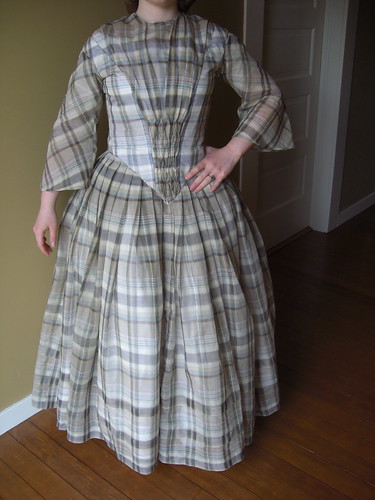 |
| You can see the half-lining better in this photo |
|
|
When I wear this dress I have accessorize it with a pair of sheer cotton undersleeves, a ladies pink silk cravat, paste brooch, seed-pearl Georgian style earrings and a white silk bonnet. I feel like Easter on parade but it is lovely to wear in the heat of the summer!








